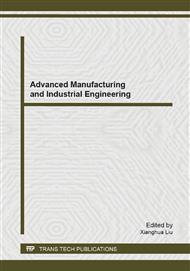p.131
p.135
p.139
p.142
p.147
p.152
p.156
p.160
p.168
Effects of Gas Nucleus on Cavitation Inception and Bubble Characteristics inside V-Throttling Groove
Abstract:
The paper combines CFD simulation and high-speed observation experiments to analyze the forming mechanism of high-speed cavitation flowing inside V-groove. It is found that the formation and development of cavitation are greatly affected by the cavitation nucleus, and subjected to two flow patterns, shear flow and vortex. When the groove is shallow or valve opening is small, cavitation inception occurs in the strong shear region near the throttling edge, which is related to the separation of boundary layer and the wall attachment effect. As the depth of the valve port increases, the reflux becomes stronger at the back of the throttling edge, which complements the low pressure area generated from the fluid separation. At the same time the pulsation is formed in the downstream due to the large longitudinal velocity gradient, resulting in vortex, and the area of low pressure in the center of vortex also leads to the generation of cavitation.
Info:
Periodical:
Pages:
147-151
Citation:
Online since:
August 2014
Authors:
Price:
Сopyright:
© 2014 Trans Tech Publications Ltd. All Rights Reserved
Share:
Citation:


